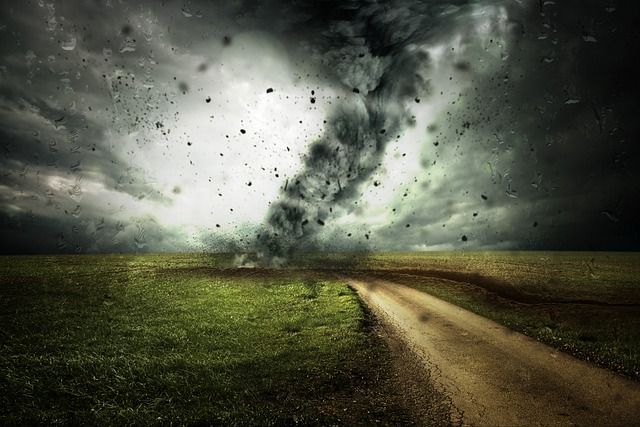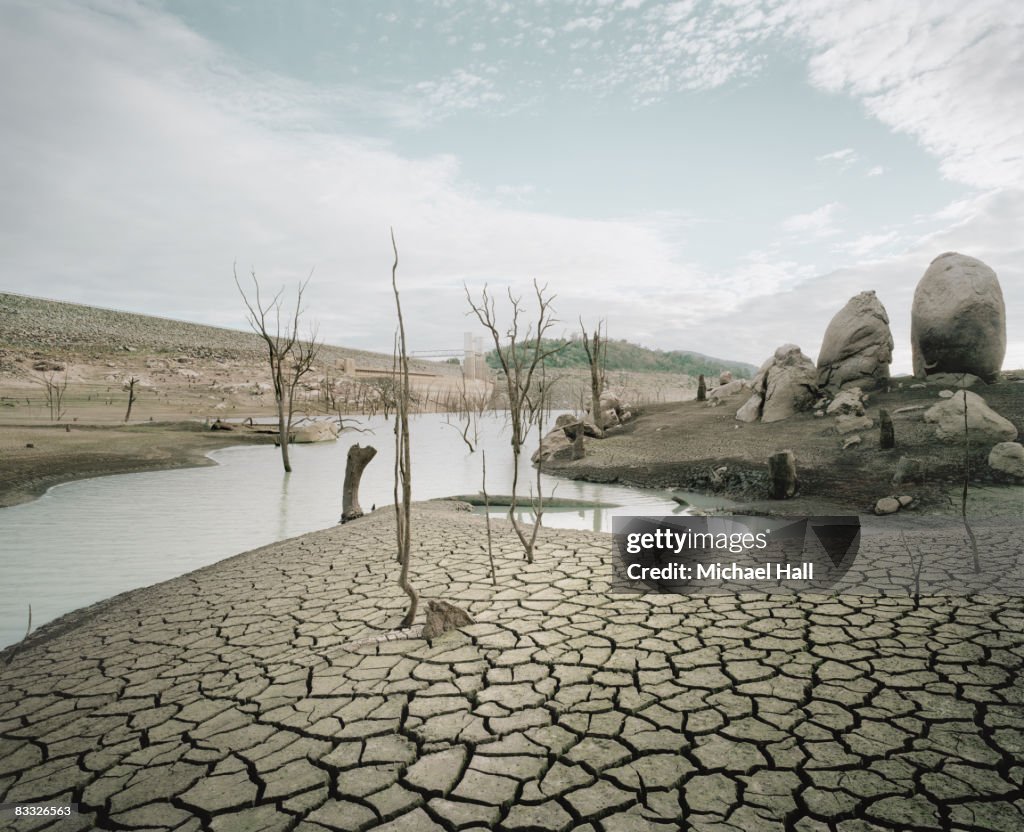
Modern climate change encompasses both global warming—the continuous rise in the average global temperature—and the broader consequences for Earth’s Modern climate system. In a wider context, climate change also refers to earlier, long-term shifts in the planet’s climate. The present increase in global temperatures is largely the result of human actions, particularly the burning of fossil fuels since the Industrial Revolution. The use of fossil fuels, deforestation, and certain farming and industrial methods release greenhouse gases. These gases trap part of the heat that the Earth radiates after absorbing sunlight, thereby warming the lower atmosphere. Carbon dioxide, the main gas driving global warming, has risen by roughly 50% since pre-industrial times, reaching levels unseen for millions of years.
The environmental impacts of Modern climate change are becoming more severe. Deserts are growing, while heat waves and wildfires occur more frequently. Accelerated warming in the Arctic has contributed to melting permafrost, retreating glaciers, and shrinking sea ice. Increasing temperatures are also fueling stronger storms, prolonged droughts, and other extreme weather events. Rapid environmental changes in mountain ecosystems, coral reefs, and the Arctic are forcing many species to either migrate or face extinction. Even if future warming is slowed, some impacts—such as ocean warming, acidification, and rising sea levels—will persist for centuries.
Read more about the Importance of Parenting
Read more about Climate Suitable
Modern Climate change poses serious risks to human societies, including greater flooding, extreme heat events, food and water shortages, increased disease spread, and economic damage. It can also drive migration and conflict. The World Health Organization considers Modern climate change one of the most significant threats to human health in the 21st century. Without strong action to limit temperature rise, risks to both ecosystems and societies will intensify. Adaptation measures—such as building flood defenses or developing drought-resistant crops—can reduce some dangers, but certain limits to adaptation have already been reached. Vulnerable communities, despite contributing little to overall emissions, face the greatest challenges in coping with these changes.
Examples of Modern climate change impacts include: wildfires worsened by heat and drought, coral bleaching caused by marine heatwaves, and severe droughts threatening water resources. The early decades of the 21st century have already seen clear effects, with 2024 recorded as the hottest year since systematic measurements began in 1850, at +1.60 °C above the pre-industrial average. Further warming will magnify these problems and may push the climate past critical tipping points, such as the complete melting of Greenland’s ice sheet. The 2015 Paris Agreement set a goal of keeping global temperature rise “well below 2 °C,” but current national pledges would still allow warming of about 2.8 °C by 2100. To limit warming to 1.5 °C, global emissions must be cut in half by 2030 and reach net zero by 2050.
Worldwide, there is strong backing for measures to Modern Climate change. Transitioning away from fossil fuels can be achieved by ending subsidies for them, improving energy efficiency, and adopting low-carbon energy sources like wind, solar, hydropower, and nuclear. Clean electricity can replace fossil fuels for transportation, heating, and industrial processes. Additionally, carbon can be drawn out of the atmosphere by expanding forests and using agricultural practices that store carbon in soil.
Before the 1980s, scientists were uncertain whether the warming influence of rising greenhouse gas levels outweighed the cooling impact of airborne particles from pollution. At that time, they often used the phrase inadvertent climate modification to describe human-driven effects on the climate. In the 1980s, the expressions global warming and climate change became more widespread, frequently used as though they meant the same thing. In scientific terms, global warming refers specifically to the increase in Earth’s surface temperature, while climate change covers both warming and the resulting changes in the planet’s climate system, such as shifts in rainfall patterns.
The term climate change can also be applied more generally to describe climatic variations occurring over the course of Earth’s history. Global warming—a phrase in use as early as 1975—rose to prominence after NASA climate scientist James Hansen used it in testimony before the U.S. Senate in 1988. Since the 2000s, climate change has become the more frequently used term. Some researchers, policymakers, and media outlets prefer to use phrases like climate crisis or climate emergency when discussing climate change, and may opt for global heating rather than global warming.
Over the past few million years, Earth’s climate has alternated between ice ages and warmer intervals. One of the warmer phases, known as the Last Interglacial about 125,000 years ago, had global temperatures roughly 0.5 °C to 1.5 °C higher than pre-industrial levels. During that time, sea levels stood 5 to 10 metres above those of today. In contrast, the last glacial maximum around 20,000 years ago was approximately 5–7 °C cooler, and sea levels were more than 125 metres (410 ft) lower than present levels.
Temperatures became relatively steady in the current interglacial period, which began about 11,700 years ago—a time that also marked the emergence of agriculture. Past climate fluctuations, such as the Medieval Warm Period and the Little Ice Age, occurred at different times in different regions. In some areas, temperatures may have matched those of the late 20th century. Evidence for these earlier climates comes from proxy data, including tree rings and ice core records.
By around 1850, thermometer readings began offering worldwide coverage.[53] From the 18th century until roughly 1970, overall warming was minimal, as the heat-trapping effect of greenhouse gas emissions was balanced by cooling from sulfur dioxide emissions. While sulfur dioxide contributes to acid rain, it also creates sulfate aerosols in the atmosphere that reflect sunlight, causing a phenomenon known as global dimming. After 1970, stricter controls on sulfur pollution combined with the continued build-up of greenhouse gases led to a sharp rise in global temperatures.[54][55][56]
Duration: 30 seconds — 0:30
A NASA animation depicts shifts in global surface temperatures from 1880 to 2023, with blue shades representing cooler periods and red shades representing warmer ones.[clarification needed]
The current pace of climate change is unmatched in several millennia.[57] Numerous independent datasets confirm a global increase in surface temperatures,[58] averaging about 0.2 °C per decade.[59] The period from 2014 to 2023 was, on average, 1.19 °C [1.06–1.30 °C] warmer compared to the pre-industrial benchmark of 1850–1900.[60] This does not mean each year was warmer than the previous one—natural climate variability can cause yearly fluctuations of about ±0.2 °C from the trend.[61] Between 1998 and 2013, negative phases of the Pacific Decadal Oscillation (PDO)[62] and the Atlantic Multidecadal Oscillation (AMO)[63] slowed the rate of warming in what became known as the “global warming hiatus.”[64] Following that period, the trend reversed, with 2024 standing far above recent averages at over +1.5 °C.[65] For this reason, scientists define temperature changes using a 20-year average to smooth out short-term variations and capture the long-term pattern.[66]: 5 [67]
Multiple lines of evidence back the reality of warming.[68][69] The upper atmosphere is cooling because greenhouse gases trap heat near Earth’s surface, reducing the amount of heat radiating into space.[70] Rising temperatures shrink average snow cover and drive glacier retreat. At the same time, warmer conditions boost ocean evaporation, leading to higher humidity and an increase in the frequency and intensity of rainfall.[71][72] Plants are blooming earlier in the spring, and countless animal species are permanently migrating toward cooler habitats.[73]
Different parts of the world are warming at different speeds. This pattern does not depend on where greenhouse gases are released, because these gases stay in the atmosphere long enough to spread across the globe. Since pre-industrial times, average surface temperatures over land have risen nearly twice as quickly as the global mean surface temperature. This is due to the fact that oceans release more heat through evaporation and have a large capacity to store heat. Since at least 1970, the total thermal energy in the climate system has steadily increased, with only short interruptions, and more than 90% of this additional heat has been absorbed by the oceans. The remainder has gone into warming the atmosphere, melting ice, and heating the land.
The Northern Hemisphere and the Arctic have experienced much faster warming than the Southern Hemisphere and Antarctica. The Northern Hemisphere contains more land, along with greater areas of seasonal snow cover and sea ice. When these reflective surfaces melt, they are replaced by darker surfaces that absorb more solar energy. Local deposits of black carbon on snow and ice also accelerate Arctic warming. In fact, surface temperatures in the Arctic are rising about three to four times faster than the global average. The melting of polar ice sheets slows both the Atlantic and Antarctic branches of thermohaline circulation, altering how heat and rainfall are distributed worldwide.
The World Meteorological Organization estimates there is nearly a 50% probability that the average global temperature over the five-year period from 2024 to 2028 will exceed +1.5 °C. The IPCC predicts that the 20-year average will rise above +1.5 °C in the early 2030s.
In its Sixth Assessment Report (2021), the IPCC projected that by 2100, global warming is very likely to range from 1.0 °C to 1.8 °C under a scenario with extremely low greenhouse gas emissions, from 2.1 °C to 3.5 °C under a moderate emissions pathway, and from 3.3 °C to 5.7 °C under a scenario with very high emissions. In the moderate and high emissions cases, warming will continue beyond 2100, with climate projections for the year 2300 indicating global surface temperatures similar to those seen millions of years ago.
The remaining carbon budget for avoiding certain levels of warming is estimated by modeling the carbon cycle and the climate’s sensitivity to greenhouse gases. According to UNEP, to maintain a 50% chance of keeping global warming below 1.5 °C, cumulative CO₂ emissions after 2023 must stay under 200 gigatonnes—roughly equivalent to four years of emissions at current rates. To limit warming to under 2.0 °C, the allowable budget is about 900 gigatonnes of CO₂, or around 16 years at present emission levels.





